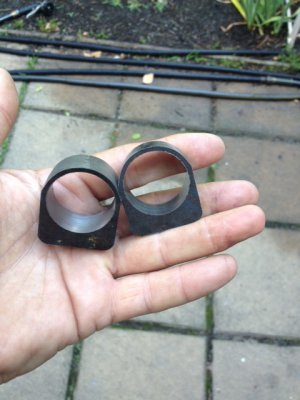Ray, just for the sake of discussion, long parts are preferably done vertical. I know you didn't build your furnace with that in mind, and that's fine. There aren't all that many heat treaters who have long part capability. I used to send parts 6-8 feet long regularly to a couple I know of. The were 41xx series alloy, and tubular to boot. Laying them down just wasn't working. We built a 100 ton rolling frame straightening press early on in this work to make do. Since we brought them in ejector drilled, we couldn't simply leave them over size and turn them straight. There was a drift requirement. When they were bowed, we had to roll them on vee blocks (ball bearing style, these were sometimes heavy), use an ultrasonic thickness mic and bent them so that the holes were straight before we turned them. It was a little mind bending at first, having to make the thick walled side run out on the plus side the correct amount to make the hole straight. Sometimes this took a couple of iterations, because they would move when we turned them.


